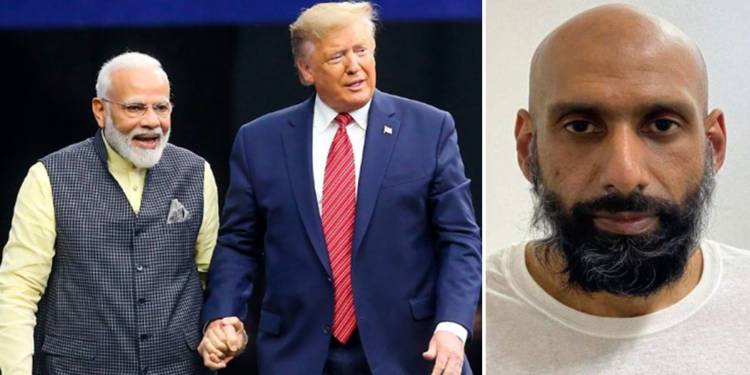An Al Qaeda terrorist named Mohammad Ibrahim Zubair has been deported to India from the United States after he completed his 60-month jail term on a terror charge there. Investigators are hoping to extract information on al Qaeda’s network in India from him as the government officials quoted that he will be ‘extensively questioned’.
Zubair was brought to India on a special flight to Amritsar on May 19, along with 167 other Indians stranded abroad—and was then taken to Hyderabad where he is now quarantined. He was arrested in 2011 for providing material support to al Qaeda leader Anwar al-Awlaki, who was killed in a drone strike by the US forces.
Relations turning a corner
India–US relations are turning a corner off late. The deportation of an al-Qaeda terrorist is being seen as a reaffirmation of the growing ties.
The highly-publicized state visit to India by the American President Donald Trump in late February this year was symbolic of this enhanced bilateral relationship and the importance of defense cooperation within it.
While serving as a reminder of the US as India’s all-round primary security partner, the visit was also designed to strengthen both leaders’ domestic political objectives.
Under Prime Minister Narendra Modi, The US has become India’s largest trading partner, with bilateral trade in goods and services totaling US$142bn in 2018.
Countering the Chinese threat in Indo-Pacific
The agreements in trade aside, the defense deals have been on an upswing too. Both countries are wary of the rise of expansionist China in the Indo-pacific region.
To keep Beijing at bay both India and the US have held a flurry of joint exercises for greater interoperability between the armed forces. From foundational military pacts to operational intelligence-sharing to expanding security cooperation in the Indian Ocean Region, the breath-taking pace of growing defence relations between the two superpowers has astounded many critics.
Joint exercises, from the naval “Malabar” (with Japan as the third regular participant) to the counterterror “Vajra Prahar” and “Yudh Abhyas”, are becoming wider in scope, size, and complexity. The two sides also held their first-ever tri-Service exercise, “Tiger Triumph”, in the Bay of Bengal last November.
India – a non-NATO ally, signatory of COMCASA, LEMOA
India and the US have also signed the COMCASA (Communications, Compatibility and Security Agreement) and are in detailed discussions over BECA (Basic Exchange Cooperation Agreement).
The U.S has already under the COMCASA, already set up a secure link between the Indian Navy headquarters and the US Pacific Command to share real-time information.
It is to be noted that the US data link is considered the most secure communication platform, which in turn will allow India access to big database of American intelligence, including real-time imagery.
Logistics Exchange Memorandum of Agreement (LEMOA) was signed nearly two years back. The pact gives both countries access to designated military facilities in specific areas. The biggest winner from this pact is the Indian Navy, which interacts and exercises the most with foreign Navies.
Sensing India’s growing ties with the USA, Russia has also come out with a proposal to sign a LEMOA like logistics agreement with India.
The US Senate had passed a law to bring India at par with America’s NATO allies like Japan, Australia, and South Korea. The National defense Authorisation Act contained the proposal and as a result India has become a major non-NATO ally.
The Defence Technology and Trade Initiative (DTTI) which had been stalled since 2012 is also likely to see a revival. Both sides agreed in October last year to jump-start the project. The DTII project is aimed to co-develop and produce cutting-edge military technologies.
Some of the exciting projects in pipeline under this initiative include developing drone swarms that can overwhelm enemy air defenses and anti-drone technology called “counter-UAS rocket, artillery and mortar systems”.
Narendra Modi is a greater risk-taker and his willingness to agree to disagree with partners if any deal is not in favor of India sets him apart from any other world leader. Whereas Donal Trump believes in his ‘art of the deal’. Despite the contrasting style of workings both the leaders share a great rapport with each other.
It is not to say that there have not been hiccups between the two nations. The difference in trade relationships still remains but it has not soured the bilateral relations by any stretch of the imagination.
As we have seen in the case of COVID-19 situation. India sent huge consignments of Hydroxychloroquine (HCQ) whereas Trump donated 200 ventilators to support India’s cause to fight the Coronavirus pandemic. Both leaders are committed to foster and cement the growing ties.


































